| Reviews & Columns |
|
Reviews DVD TV on DVD Blu-ray 4K UHD International DVDs In Theaters Reviews by Studio Video Games Features Collector Series DVDs Easter Egg Database Interviews DVD Talk Radio Feature Articles Columns Anime Talk DVD Savant Horror DVDs The M.O.D. Squad Art House HD Talk Silent DVD
|
DVD Talk Forum |
|
|
| Resources |
|
DVD Price Search Customer Service #'s RCE Info Links |
|
Columns
|
|
|
F for Fake: Criterion Collection
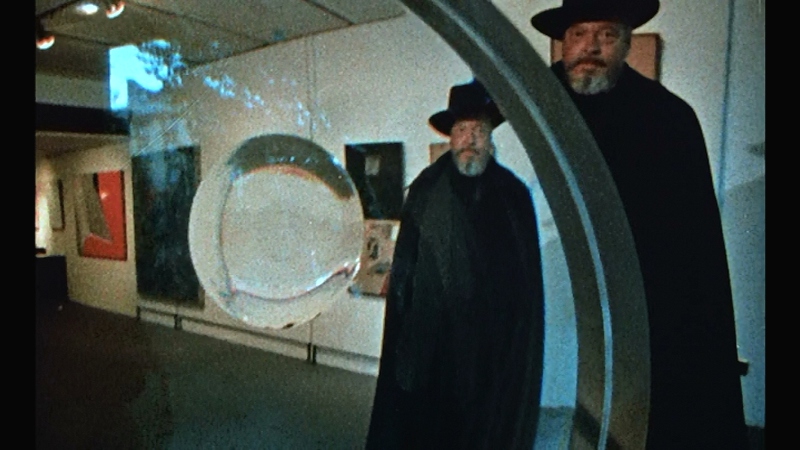 Confounding, creative, and consistently compelling, Orson Welles' F for Fake (1974) was the director's last completed feature-length film. It was also one of his least well-known, at least until a decade or two ago: met with a lukewarm critical and commercial response, the film didn't debut domestically until 1976. Even F for Fake's unique nine-minute trailer, created by Welles that same year and assembled from entirely new footage, was rejected by distributors. Nonetheless, F for Fake was self-financed and, like so few of Welles' productions, one in which he exercised complete creative control. The film's purposefully misleading approach still has the capacity to alienate first-time viewers, but those with a soft spot for Welles' winking charm and soothing narration won't mind a bit of wool over their eyes. F for Fake is an autobiographical "essay film" masquerading as a documentary. On the surface, it's a study of notorious art forger Elmyr de Hory and biographer Clifford Irving (shot by cinematographer Francois Reichenbach), and was originally planned as such...but the discovery of Irving's fabricated Howard Hughes biography turned it into a layered examination of fraud and forgery. Welles serves as a magician-turned-host; his longtime girlfriend Oja Kodar appears as a beautiful young woman who tricks Pablo Picasso into giving up a dozen of his original sketches. We're tricked into thinking most of it is true...but then again, it's not surprising to learn that the man behind 1938's infamous adaptation of The War of the Worlds enjoyed tricking audiences. Welles' long-standing battle with the studio system---which affected a number of his films including The Magnificent Ambersons, Mr. Arkadin, and Touch of Evil, just to name a few---offered plenty of fuel for his numerous ventures outside Hollywood boundaries. This was Welles' last true rebuttal. The execution of F for Fake is almost as ambitious as the premise, but it's here that some viewers may not appreciate its heavy manipulation. The film's unique structure involves endless smash cuts, out-of sync dialogue, "behind-the-scenes" footage, at least 25 minutes of lies, and even a number of brief stand-ins: Kodar and Hughes, for example, are replaced (by a sibling and an actor, respectively) during at least one short sequence. Welles' narration for The War of the Worlds, used briefly during the film, has even been re-recorded and doesn't match up with the original broadcast. By Welles' own design, these replacements don't seem to matter: they're taken at face value and, unless studied in detail, will likely register with viewers as "authentic". But will anyone know the difference in another 40 years? Welles expressed sincere disappointment with F for Fake's tepid box office and critical reception, initially hoping that the film's stylish, artistic structure would revitalize his directing career. It didn't, obviously...and as a result, films like F for Fake remain buried much deeper in public consciousness than high-profile productions like Citizen Kane. But like so many lost gems before and after it, F for Fake has grown in stature over the last few decades, thanks in part to Criterion's 2005 DVD and this subsequent Blu-ray package. Both are excellent examples of the studio's "film school in a box" mentality, serving up a high quality A/V presentation and plenty of bonus features that span several decades.
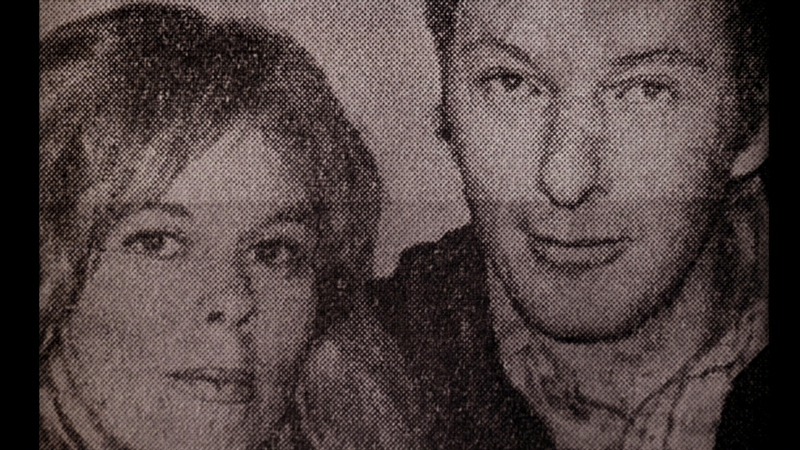
Presented in its original 1.66:1 aspect ratio, this 1080p transfer of F for Fake looks quite good; it's easily better than the 2005 DVD which was, for its time, a perfectly respectable effort. Though it's certainly not your traditional documentary, F for Fake's visuals still fall victim to certain genre shortcomings by design: footage of varying quality has been taken from a number of sources, but they look about as good as possible under these circumstances. Not surprisingly, the 16mm footage showcases the heaviest film grain but it's well represented throughout, giving the end product something of a patchwork quality that retains a high level of image detail and strong textures. Dirt and debris are present during a handful of sequences and the sporadic freeze-frames, which was surprising but doesn't distract from the overall viewing experience. Overall, a quality presentation that retains F for Fake's unique visual charms.
There's much less to say about PCM 1.0 track aside from that it's perfectly adequate. Dialogue, sporadic music cues and Welles' soothing narration sound crisp and clear without fighting for attention, while the overall audio experience even manages to showcase a few moments of depth at times. Overall, this lossless mono presentation is true to the source material and purists will enjoy it. Optional English subtitles are included during the main feature only.
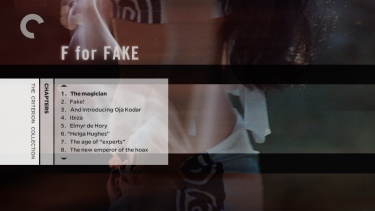 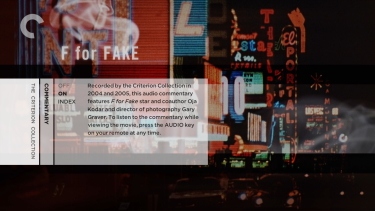
Aside from that, we also get everything from the 2005 DVD. These extras include an Introduction by filmmaker Peter Bogdanovich, a feature-length Audio Commentary with Welles collaborator Oja Kodar and cinematographer Gary Graver, the film's unusual nine-minute Trailer, Kodar's 1995 documentary "Orson Welles: One-Man Band", the 1997 Elmyr de Hory documentary "Almost True: The Noble Art of Forgery", a vintage Profile of Clifford Irving, and a few enlightening Q&A Interview Clips from the reclusive Howard Hughes. Normally, I'd balk at the lack of new supplements after almost a decade between releases, but what's here is highly entertaining, informative, and appropriate. Sadly, though, optional English subtitles have not been included for these supplements, a practice which continues to baffle me.
F for Fake is not for everyone, even if the premise sounds interesting. But if you've seen and enjoyed a number of Welles' A productions, there's a good chance you'll appreciate this film's visual, editorial, and thematic charms...even if, like me, you're thrown off-balance by its structure the first time around. As usual, Criterion's Blu-ray offers a capable amount of support for the main feature, including a quality A/V presentation and an assortment of extras mostly ported from the 2005 DVD. Die-hard fans and curious newcomers may want to indulge, but this isn't a night-and-day improvement from the earlier release. It's still firmly Recommended, though a rental might be enough for some.
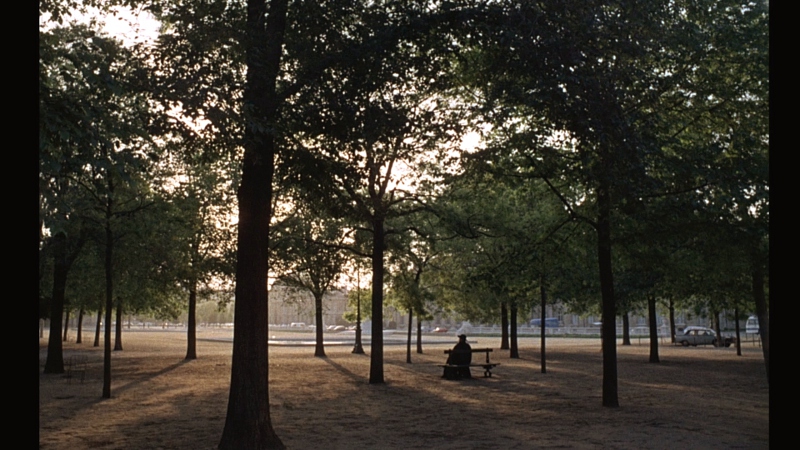 |
|
| Popular Reviews |
| Sponsored Links |
|
|
| Sponsored Links |
|
|
| Release List | Reviews | Shop | Newsletter | Forum | DVD Giveaways | Blu-Ray | Advertise |
|
Copyright 2024 DVDTalk.com All Rights Reserved. Legal Info, Privacy Policy, Terms of Use,
Manage Preferences,
Your Privacy Choices | |||||||













